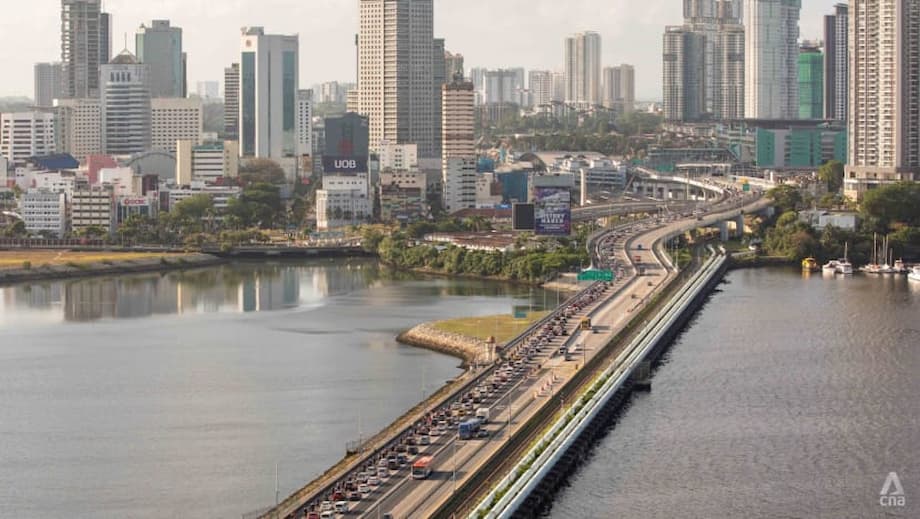Singapore’s Stance on Cross-Border Ride-Hailing: No Full Liberalisation Ahead
Singapore’s Land Transport Authority (LTA) has made it clear: there are no plans to fully liberalise cross-border ride-hailing services between Singapore and Malaysia. This announcement comes after recent speculation and media reports suggesting that Singapore might soon allow on-demand ride-hailing apps to operate freely across the Causeway, connecting Singapore and Johor Bahru. Instead, the LTA is considering more measured enhancements to the current system, such as expanding the number of boarding and alighting points and enabling ride-hailing app bookings for licensed cross-border taxis.
- Singapore’s Stance on Cross-Border Ride-Hailing: No Full Liberalisation Ahead
- What Is the Current Cross-Border Taxi Scheme?
- Why Is Full Liberalisation Off the Table?
- Potential Enhancements: More Pickup Points and App-Based Bookings
- Regulatory Background: How Singapore Manages Point-to-Point Transport
- Broader Implications: Economic, Social, and Policy Considerations
- In Summary
This policy clarification followed a high-level meeting between Singapore’s Acting Transport Minister Jeffrey Siow and Johor’s Chief Minister Onn Hafiz Ghazi, where cross-border transport issues—including the possibility of e-hailing services—were discussed. However, no decisions were made, and the LTA emphasised that any changes would require bilateral agreement and careful consideration of commuter needs and the interests of both Singaporean and Malaysian drivers.
What Is the Current Cross-Border Taxi Scheme?
At present, cross-border point-to-point transport between Singapore and Malaysia is governed by the reciprocal Cross Border Taxi Scheme (CBTS). Under this arrangement, up to 200 licensed taxis from each country are permitted to ferry passengers across the border. However, these taxis can only pick up and drop off passengers at a single designated terminal in the other country: Singapore taxis at Larkin Sentral in Johor Bahru, and Malaysian taxis at Ban San Street Terminal in Singapore.
The CBTS was designed to ensure orderly, safe, and regulated cross-border taxi operations. Licensed taxis are subject to strict regulatory requirements, including vocational licensing, vehicle inspections, and insurance coverage. The scheme aims to prevent illegal point-to-point services by foreign-registered vehicles, which can pose safety and insurance risks for passengers.
Despite the quota of 200 taxis per side, the scheme is not fully utilised. Authorities from both countries have encouraged greater take-up of the available slots, seeing this as a way to better meet commuter demand for convenient cross-border travel.
How Does the Scheme Work for Passengers?
Passengers can hire a licensed cross-border taxi at the designated terminal or, in some cases, book in advance through licensed operators. According to the LTA, fares from Ban San Street Terminal in Singapore to Malaysia are S$60 per taxi or S$15 per person. For pick-ups from other locations in Singapore or advance bookings, passengers should check with the respective licensed taxi operators.
Private hire cars (such as those booked via ride-hailing apps like Grab or Gojek) are not allowed to provide cross-border point-to-point services for hire and reward purposes. This restriction is intended to maintain regulatory oversight, ensure passenger safety, and protect the livelihoods of licensed taxi and private hire drivers.
Why Is Full Liberalisation Off the Table?
The idea of fully liberalising cross-border ride-hailing—allowing any ride-hailing app or private hire vehicle to operate freely between Singapore and Malaysia—has been floated by some stakeholders, particularly on the Malaysian side. Johor’s Chief Minister Onn Hafiz Ghazi has argued that such a move could offer more flexible, on-demand transport options, reduce congestion at the Causeway, and provide additional income opportunities for Malaysian drivers.
However, Singapore’s LTA has consistently emphasised that any changes to the cross-border transport regime must balance several priorities:
- Meeting commuter demand for convenient, safe, and reliable cross-border travel
- Safeguarding the interests and livelihoods of Singapore’s taxi and private hire drivers
- Ensuring regulatory compliance, safety standards, and proper insurance coverage for passengers
- Maintaining orderly traffic and enforcement against illegal operators
As a result, the LTA has ruled out full liberalisation for now, instead focusing on incremental improvements to the existing CBTS framework. These may include allowing ride-hailing apps to book cross-border trips on licensed taxis and increasing the number of designated boarding and alighting points in both countries. Any such changes would require mutual agreement between Singapore and Malaysia.
Stakeholder Concerns: Drivers, Commuters, and Enforcement
The debate over cross-border ride-hailing is not just about convenience—it also touches on the livelihoods of thousands of drivers and the safety of commuters. Some Malaysian politicians, such as Johor state assemblyman Andrew Chen, have called for a “mutually beneficial” regulatory mechanism that would allow both Singaporean and Malaysian drivers to participate in cross-border ride-hailing, provided they meet licensing, health, and insurance requirements.
Chen highlighted the impact of Singapore’s enforcement actions against illegal ride-hailing services, which have resulted in vehicle impoundments and fines for drivers caught providing unauthorised cross-border transport. He argued that cross-border mobility is vital for economic, social, and political ties between the two countries and should not be treated as a zero-sum game.
Johor assemblyman Andrew Chen said, “Cross-border mobility is the lifeblood of bilateral relations between Malaysia and Singapore economically, politically, and socially, and should not be treated as a zero-sum game.”
Singapore’s LTA, for its part, has warned commuters against using illegal ride-hailing services, citing the lack of proper insurance and safety risks. Since 2022, more than 100 drivers have been caught providing illegal cross-border passenger transport using foreign-registered vehicles, with penalties including fines and vehicle forfeiture.
Potential Enhancements: More Pickup Points and App-Based Bookings
While full liberalisation is not on the cards, both Singapore and Malaysia are exploring ways to make cross-border taxi services more convenient and accessible. Among the options being considered:
- Increasing the number of boarding and alighting points in both countries, moving beyond the current single-terminal arrangement. This could reduce the need for passengers to make multiple transfers and improve the overall commuting experience.
- Allowing ride-hailing apps to book cross-border trips on licensed taxis, making it easier for commuters to arrange cross-border journeys using familiar digital platforms. This would also help licensed taxi drivers reach a broader customer base.
Any changes to the CBTS would require agreement from both governments and would be implemented with an eye toward commuter demand, driver welfare, and regulatory compliance.
Public Transport: Calls for Earlier Cross-Border Bus Services
In addition to taxi services, cross-border bus operations are a critical part of daily commuting for thousands of people who live in Johor Bahru and work or study in Singapore. Currently, the earliest public bus from Johor Bahru to Singapore starts at 5am on weekdays. However, Malaysian authorities have requested that Singapore’s cross-border buses begin operating from 4am to help alleviate early morning crowding at the checkpoints.
The LTA is reviewing this request in consultation with bus operators such as SBS Transit and SMRT. Key considerations include ensuring that the first buses align with the start times of local bus and MRT services in Singapore, as well as maintaining commuter safety and operational sustainability. The LTA is also exploring the possibility of engaging private bus operators to offer earlier services at higher fares, providing more options for early-morning commuters.
An LTA spokesperson explained, “We are assessing if bus operating times can be adjusted to address early morning bus crowding, including engaging private bus operators for earlier services at higher fares.”
This review reflects the broader effort to improve the cross-border commuting experience, even as the authorities maintain a cautious approach to liberalising ride-hailing services.
Regulatory Background: How Singapore Manages Point-to-Point Transport
Singapore’s approach to point-to-point (P2P) transport is shaped by a comprehensive regulatory framework. The Point-to-Point Passenger Transport Industry Bill, passed in 2019 and implemented in 2020, established clear licensing requirements for taxi and private hire car operators. These include:
- Street-Hail Service Operator Licences (SSOL) for taxi operators providing street-hail services
- Ride-Hail Service Operator Licences (RSOL) for operators providing app-based ride-hailing services
- Vocational licences for all taxi and private hire car drivers, with requirements for training, health checks, and adherence to safety standards
Private hire cars are not permitted to provide cross-border point-to-point services for hire and reward purposes. This restriction is intended to ensure that only properly licensed and regulated vehicles and drivers operate in the cross-border space, reducing the risk of illegal operations and enhancing passenger safety.
Licensed cross-border taxis are allowed to pick up and drop off passengers anywhere within their home country but must use the designated terminal when operating in the other country. This arrangement helps prevent foreign taxis from plying the roads illegally and ensures that all cross-border transport is conducted within a regulated framework.
Broader Implications: Economic, Social, and Policy Considerations
The debate over cross-border ride-hailing is emblematic of the broader challenges facing Singapore and Malaysia as they seek to balance economic integration, commuter convenience, and regulatory oversight. The Causeway is one of the world’s busiest land crossings, with hundreds of thousands of people moving between Singapore and Johor Bahru daily for work, study, and leisure.
Any changes to the cross-border transport regime have significant implications:
- For commuters: More flexible and convenient transport options could reduce travel times and improve quality of life, especially for those who make the daily journey across the border.
- For drivers: Liberalisation could open up new income opportunities, but also intensify competition and raise concerns about regulatory enforcement and safety standards.
- For both governments: Policy changes must be carefully negotiated to ensure mutual benefit, regulatory compliance, and the protection of local industries.
As Singapore and Malaysia continue to discuss the future of cross-border transport, the focus remains on incremental improvements rather than sweeping liberalisation. Both sides recognise the need to enhance connectivity while safeguarding the interests of commuters and drivers alike.
In Summary
- Singapore’s LTA has ruled out fully liberalising cross-border ride-hailing services with Malaysia for now.
- The current Cross Border Taxi Scheme allows up to 200 licensed taxis from each country to operate between Singapore and Johor Bahru, but only between designated terminals.
- Authorities are considering increasing the number of boarding and alighting points and enabling app-based bookings for licensed cross-border taxis.
- Private hire cars and unlicensed ride-hailing services remain prohibited for cross-border point-to-point transport.
- Malaysian officials have requested earlier cross-border bus services to ease morning congestion; the LTA is reviewing this with bus operators.
- Any changes to cross-border transport arrangements require bilateral agreement and must balance commuter demand, driver welfare, and regulatory compliance.
- Enforcement against illegal cross-border ride-hailing remains active, with penalties for unlicensed drivers and vehicles.
- The broader debate reflects the complexities of managing one of the world’s busiest land crossings while meeting the needs of commuters, drivers, and both governments.












